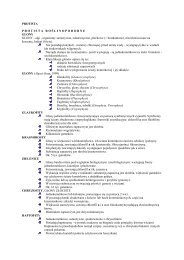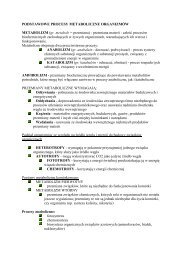Hair Shaft Abnormalities – Clues to Diagnosis and Treatment
Hair Shaft Abnormalities – Clues to Diagnosis and Treatment
Hair Shaft Abnormalities – Clues to Diagnosis and Treatment
Create successful ePaper yourself
Turn your PDF publications into a flip-book with our unique Google optimized e-Paper software.
<strong>and</strong> trichorhinophalangeal syndrome by scanning electron<br />
microscopy. The hairs of those patients showed<br />
twisting, longitudinal grooves, trichorrhexis nodosa <strong>and</strong><br />
variations in hair caliber.<br />
X-linked hypohidrotic ec<strong>to</strong>dermal dysplasia is characterized<br />
by hypotrichosis with fi ne, slow-growing scalp <strong>and</strong><br />
body hair, sparse eyebrows, hypohidrosis, nail anomalies<br />
<strong>and</strong> hypodontia [14] . The hair is sparse, dry, lusterless<br />
<strong>and</strong> light colored. Rogers [15] observed that the bar code<br />
appearance which mirrors a microscopic artifact is often<br />
seen in patients with hypohidrotic ec<strong>to</strong>dermal dysplasia.<br />
There are parallel dark b<strong>and</strong>s of different lengths running<br />
across the full width of the hair shaft. Kere et al. [16]<br />
found mutations in ec<strong>to</strong>dysplasin, a TNF lig<strong>and</strong>, <strong>to</strong> be the<br />
cause of the X-linked hypohidrotic ec<strong>to</strong>dermal dysplasia.<br />
The ec<strong>to</strong>dysplasin pathway, a new TNF pathway, has an<br />
important function in embryonic development <strong>and</strong> especially<br />
in the formation of ec<strong>to</strong>dermal structures including<br />
hair. Mutations in the human homologue of the mouse<br />
downless (dl) gene cause au<strong>to</strong>somal recessive or dominant<br />
hypohidrotic ec<strong>to</strong>dermal dysplasia [17] .<br />
Ectrodactyly, ec<strong>to</strong>dermal dysplasia <strong>and</strong> cleft palate<br />
(EEC) syndrome has initially been described in 1804.<br />
Since then the clinical spectrum has been further delineated.<br />
EEC syndrome is an au<strong>to</strong>somal dominant trait involving<br />
ec<strong>to</strong>dermal <strong>and</strong> mesodermal tissue. Marked scalp<br />
dermatitis may occur early in the disease [18, 19] . Scarring<br />
folliculitis in a 16-year-old boy was observed by<br />
Trüeb et al. [20] . They documented reduced hair elasticity<br />
indicating either an abnormal composition or a disordered<br />
arrangement of microfi brils within the apparently<br />
normal keratin matrix. <strong>Hair</strong> is affected in all cases. <strong>Hair</strong><br />
is light colored, coarse <strong>and</strong> dry. Axillary <strong>and</strong> pubic hair<br />
may be sparse. An increase in hair pigmentation with age<br />
has been observed. A germline missense mutation in the<br />
p63 gene underlying EEC syndrome has been reported<br />
[21] . Heterozygous germline mutations in the p53 homologue<br />
p63 are critical for maintaining the progeni<strong>to</strong>r cell<br />
populations that are necessary <strong>to</strong> sustain epithelial development,<br />
limb <strong>and</strong> craniofacial morphogenesis [22, 23] .<br />
AEC syndrome is inherited in an au<strong>to</strong>somal dominant<br />
fashion <strong>and</strong> st<strong>and</strong>s for ankyloblepharon, ec<strong>to</strong>dermal defects<br />
<strong>and</strong> clefting of the lip <strong>and</strong> palate [24] . It is allelic<br />
with the EEC syndrome <strong>and</strong> can be distinguished by the<br />
presence of lobster type malformations of the h<strong>and</strong>s <strong>and</strong><br />
feet.<br />
Pili trianguli et canaliculi may appear as isolated uncombable<br />
hair syndrome, but associations with other ec<strong>to</strong>dermal<br />
malformations may occur. Uncombable hair<br />
syndrome is characterized by scalp hairs arranged in bun-<br />
66<br />
Derma<strong>to</strong>logy 2005;211:63<strong>–</strong>71<br />
dles in all directions, resistant <strong>to</strong> brush <strong>and</strong> comb. <strong>Hair</strong><br />
diameter in this condition shows a triangular <strong>to</strong> reniform<br />
<strong>to</strong> heart shape aspect on cross-sections, <strong>and</strong> a groove, canal<br />
or fl attening along the entire length of the hair in at<br />
least 50% of hairs examined by scanning electron microscopy<br />
[25] . Several entities may lead <strong>to</strong> uncombable spunglass<br />
hair. As a rule, the syndrome becomes obvious during<br />
the fi rst years of life. The hair is normal in quantity,<br />
but dry <strong>and</strong> silvery blond. Increased fragility is not common.<br />
Trichorhinophalangeal syndrome is inherited as an<br />
au<strong>to</strong>somal dominant trait <strong>and</strong> clinically characterized by<br />
growth retardation, craniofacial abnormalities, severe<br />
brachydactyly, pear-shaped nose, elongated philtrum,<br />
thin upper lip <strong>and</strong> sparse <strong>and</strong> slow-growing hair with hair<br />
shaft alterations. In addition, mental retardation <strong>and</strong> cartilaginous<br />
exos<strong>to</strong>ses may occur depending on the type of<br />
the syndrome.<br />
Cartilage-hair hypoplasia, also called McKusick type<br />
metaphyseal chondrodysplasia, is an au<strong>to</strong>somal recessive<br />
skeletal dysplasia with disproportionate short stature, alopecia<br />
<strong>and</strong> metaphyseal abnormalities in skeletal radiographs.<br />
<strong>Hair</strong> is fi ne, sparse, light colored with sparse eyebrows<br />
<strong>and</strong> eyelashes. Other common features are a defective<br />
immunity <strong>and</strong> an increased risk for malignancies.<br />
The major mutation causing cartilage-hair hypoplasia is<br />
a nucleotide substitution in the ribonuclease mi<strong>to</strong>chondrial<br />
RNA gene which encodes the untranslated RNA<br />
that is a component of mi<strong>to</strong>chondrial RNA-processing<br />
endoribonuclease [26] .<br />
Nether<strong>to</strong>n’s syndrome is a rare ( ! 1: 100,000) au<strong>to</strong>somal<br />
recessive disease characterized by hair shaft defects, ichthyosis<br />
<strong>and</strong> a<strong>to</strong>py. 18% of 51 cases with neonatal <strong>and</strong> infantile<br />
erythrodermas were fi nally diagnosed as Nether<strong>to</strong>n’s<br />
syndrome [27] . The main hair abnormality in Nether<strong>to</strong>n’s<br />
syndrome was initially named bamboo hair <strong>and</strong><br />
later called trichorrhexis invaginata. Less specifi c hair abnormalities<br />
are <strong>to</strong>rsions, trichorrhexis nodosa <strong>and</strong> helical<br />
hairs. However in the neonatal period, hair shaft anomalies<br />
can still be lacking which makes an early diagnosis<br />
rather diffi cult [28] . Sometimes the diagnosis of the hair<br />
shaft anomalies is easier <strong>to</strong> perform in the eyebrows than<br />
on scalp hair [29] . The typical trichorrhexis invaginata is<br />
easily recognized under light microscopy, although scanning<br />
electron microscopy gives a nicer picture. Chavanas<br />
et al. [30] mapped the disease <strong>to</strong> chromosome 5q32 by linkage<br />
analysis <strong>and</strong> homozygosity demonstrated in 20 families<br />
with Nether<strong>to</strong>n’s syndrome. The same group fi nally<br />
found mutations in SPINK5, encoding a serine protease<br />
inhibi<strong>to</strong>r as the cause for Nether<strong>to</strong>n’s syndrome [31] .<br />
Itin /Fistarol











